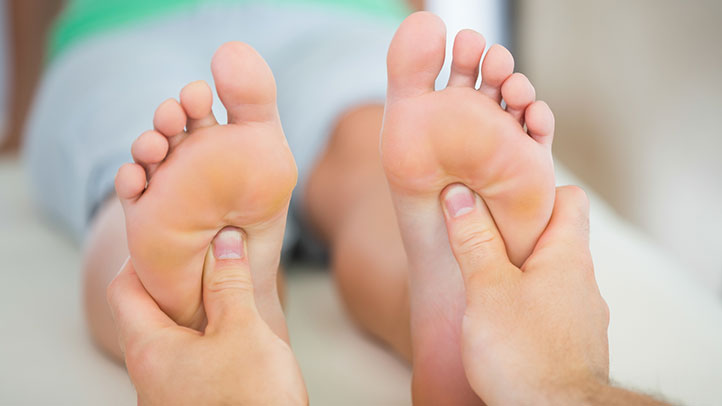
Diabetes and Feet
Diabetes is a complex condition with far reaching side effects whether Type 1 or Type 2.
Nutrition and medication will always be key factors but there are other things to think about.
In the UK there are 135 foot amputations EVERY WEEK related to diabetes, that’s over 20 every day!
But 4 out of 5 of these could be prevented with good foot care. Here’s how to be that 1 exception!
Daily Feet
Make footcare a part of your daily routine, just like checking your blood glucose levels.
80% of amputations are due to foot ulcers which aren’t noticed and are left untreated.
Look for any signs of redness, pain, build-up of hard skin or changes in the shape of your feet. Use a mirror to look underneath the foot.
Diabetes UK has a simple checklist here and you can also download their guide Diabetes UK - Simple Steps to Healthy Feet (1331 downloads ) .
Have you got that feeling?
Use the “Touch the Toes” test to check for loss of feeling.
This is important as loss of feeling means you may hurt your feet and not realise.
Download the simple Touch the Toes test Guide (1469 downloads ) as well.
Circulation
Poor circulation means any injuries or infection in the feet will take longer to heal.
Regular walks can help keep blood pumping and prevent pooling and bruising at the feet and ankles.
Pedicure?
Professional foot care is important, try to see a podiatrist or chiropodist regularly. And make sure that any pedicurist is extra squeaky clean and sterile.
- Keeping your toenails trimmed and filed with no sharp edges is important.
- Never use corn removing plasters or blades as it is too easy to damage the skin and cause and infection.
- Wash your feet daily taking care to dry between the toes.
- Use moisturising cream daily.
Socks
Avoid socks with wrinkles or prominent seams, elastic tops (restrict circulation) or darned areas / holes.
If the Shoe fits . . . .
Shoe fit is very important – any blister from your shoe or sandal rubbing on your foot could lead to infection. So take your time shopping. Try and shop at the end of the day when your feet are slightly larger – early morning shopping might be quieter but your feet might squeeze into the wrong size!
Good support is also very important for maintaining good blood supply to the feet and toes. It helps to maintain nerve health reducing peripheral neuropathy as well.
You may find a soft, specially designed insole or orthotic the simplest thing as you can then slip them in whichever shoes you are wearing.

Leave a Reply